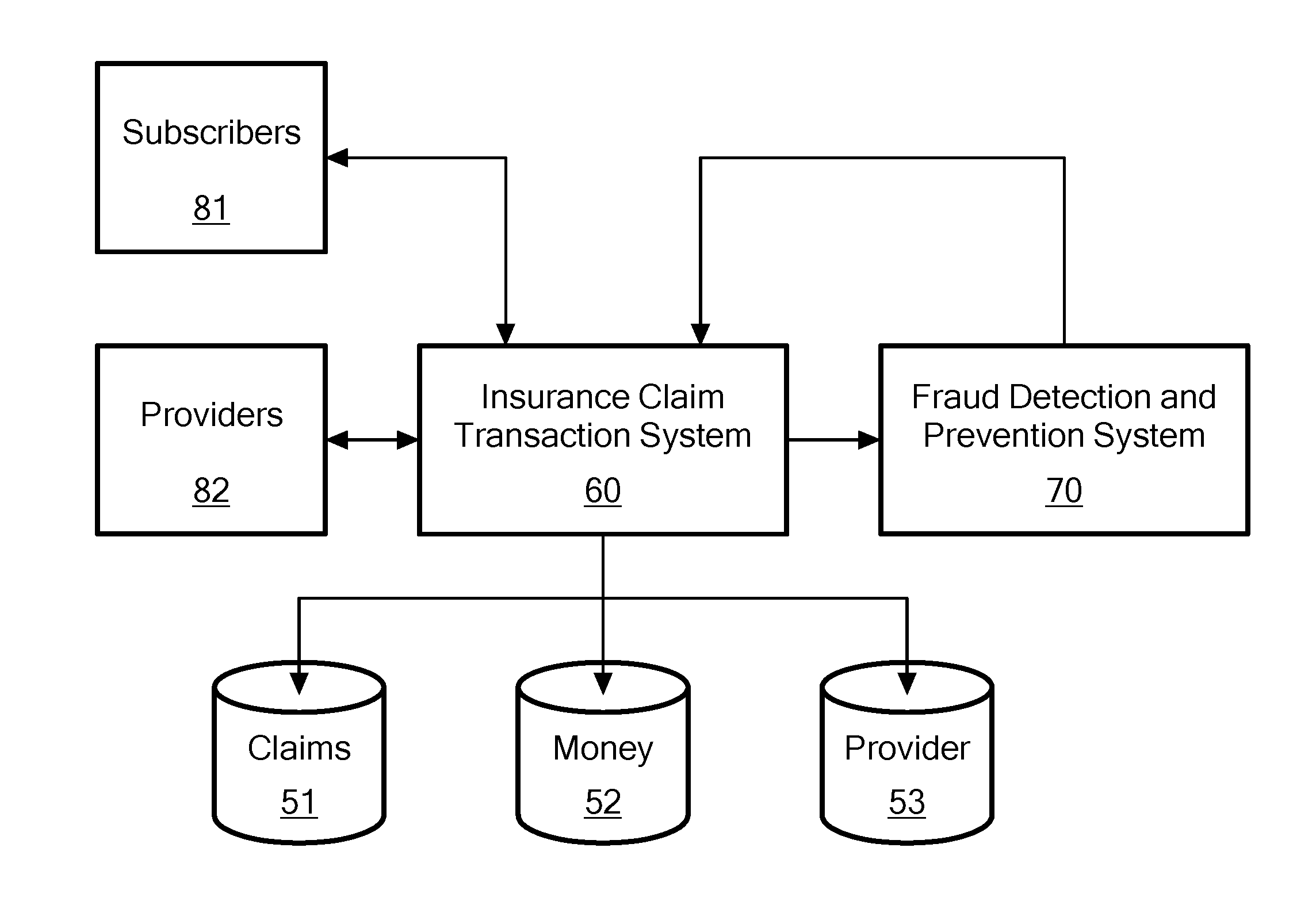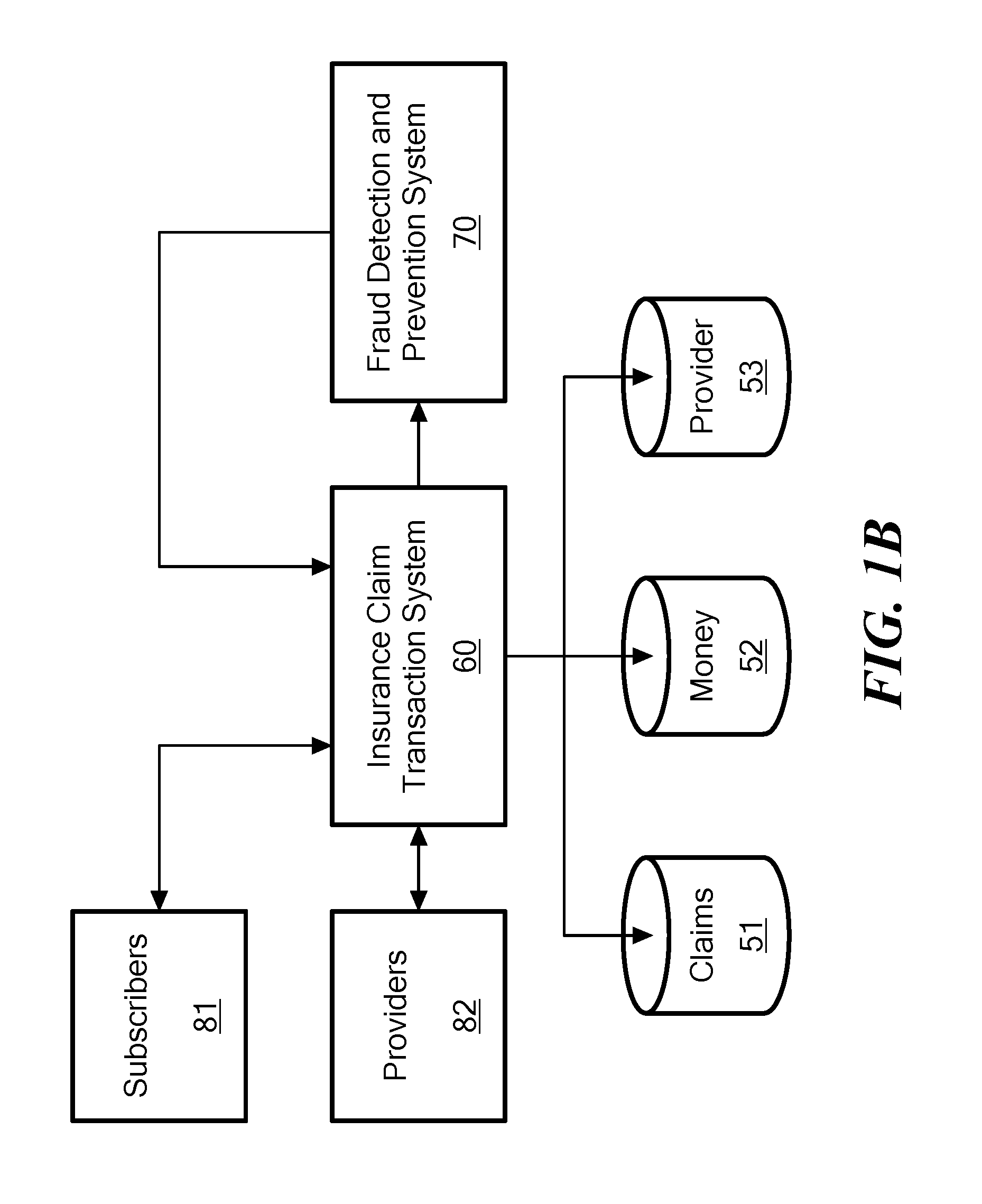Insurance Fraud Detection and Prevention System
a fraud detection and prevention system technology, applied in the field of identification of fraudulent behavior, can solve the problems of only detecting 10% of losses, affecting the net cost benefit, and originating fraud may be both with the provider and the patien
- Summary
- Abstract
- Description
- Claims
- Application Information
AI Technical Summary
Benefits of technology
Problems solved by technology
Method used
Image
Examples
Embodiment Construction
[0048]Definitions. As used in this description and the accompanying claims, the following terms shall have the meanings indicated, unless the context otherwise requires:
[0049]“Insurance Claim Transaction System” is a computer-implemented system of processors, application level programs, and databases serving an insurance company for processing and analysis of data regarding insurance claims and payout of insurance claims. Insurance claim transaction systems can be multi-layered wherein data is received from claimants, health care providers, medical professionals, diagnostic persons, as well as, internal processing by members of the insurance company. Data in an insurance claim transaction system undergoes processing and analysis with established business rules of the insurance company;
[0050]“Fraud” is a deliberate deception perpetrated against or by an insurance company or agent for the purpose of financial gain. Fraud can be categorized as “hard” fraud and “soft fraud”. Hard fraud ...
PUM
 Login to View More
Login to View More Abstract
Description
Claims
Application Information
 Login to View More
Login to View More - R&D
- Intellectual Property
- Life Sciences
- Materials
- Tech Scout
- Unparalleled Data Quality
- Higher Quality Content
- 60% Fewer Hallucinations
Browse by: Latest US Patents, China's latest patents, Technical Efficacy Thesaurus, Application Domain, Technology Topic, Popular Technical Reports.
© 2025 PatSnap. All rights reserved.Legal|Privacy policy|Modern Slavery Act Transparency Statement|Sitemap|About US| Contact US: help@patsnap.com



